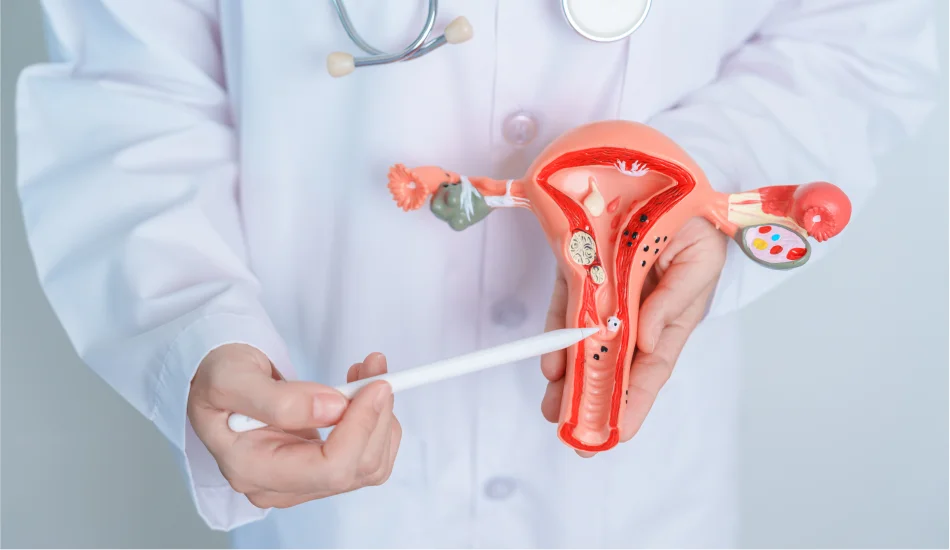
Hysterectomy, also known as uterus removal surgical procedure is standard procedure used to treat a range of gender-related issues, ranging from fibroids to endometriosis, and some types of cancer. While the thought of having an hysterectomies may be overwhelming but knowing the different kinds of hysterectomies as well as their advantages can assist you in making an informed choice regarding your options for healthcare. This blog will look at the different kinds of hysterectomy which include robotic hysterectomy and will discuss the possible benefits and pros and cons of each. In addition, we’ll discuss key details of the recovery process, including hormone therapy following hysterectomies to make sure you understand the full scope about the process.
Understanding Hysterectomy
Hysterectomy refers to the removal surgically of the uterus and occasionally other reproductive organs, based on the purpose and type of the procedure. It can save lives and alleviate symptoms for many women who suffer from persistent gynecological disorders. Some of the most frequent conditions treated with the procedure include:
- Uterine Fibroids :- Growths that are not cancerous and can cause severe bleeding and pain.
- Endometriosis :- A condition in which an uterine-like mass of tissue is growing outside the uterus, creating discomfort and infertility.
- Uterine Or Cervical Cancer :- The procedure of hysterectomy can be an element of the treatment regimen for these cancers.
- Chronic Pelvic Pain :- In some instances the hysterectomy procedure can ease the pain that is that is caused by other gynecological conditions.
Types of Hysterectomy
There are a variety of hysterectomy, each designed to meet specific requirements of the patient and their medical condition. The kind of hysterectomy that is recommended is based on the patient’s health as well as their health history and the desired outcome.
- Total Hysterectomy :- Total Hysterectomy is by far the most well-known surgical procedure for removing the uterus. This involves the elimination of all the uterus including the cervical cervix. This procedure can be suggested in cases of endometriosis or fibroids as well as cancer. In some cases, the ovaries and fallopian tubes are also removed, known as a bilateral salpingo-oophorectomy.Completely eliminating the cervix and uterus offers significant benefits, including a reduced risk of cervical cancer and relief from symptoms such as frequent bleeding and chronic pain. This procedure can also prevent the recurrence of conditions like endometriosis and fibroids. However, removing the ovaries may lead to menopausal symptoms, potentially necessitating hormone therapy post-surgery. Additionally, this approach generally requires a longer recovery period compared to shorter procedures.
- Subtotal (Partial) Hysterectomy :- An Subtotal Hysterectomy is also known as partial hysterectomy, entails taking out the top section of the uterus, while keeping the cervix intact. This procedure is recommended in cases where cervical preservation is required or if the cervix is healthy and does not require removal.The recovery time for this procedure is typically shorter than for a complete hysterectomies , and it may present a lower risk of complications related to bladder support and pelvic function. However, routine cervical exams, such as Pap smears, are still necessary, and this approach may not be suitable for conditions affecting the cervix.
- Radical Hysterectomy :- A radical Hysterectomy is a larger operation that involves taking out the cervical, uterus, the surrounding tissues, and occasionally even a part of vagina. The procedure is usually suggested for cases of cervical cancer.The complete removal of cancerous tissues can significantly enhance cancer treatment outcomes and improve survival rates. However, this more extensive procedure requires a longer recovery time and carries a greater risk of complications due to the substantial amount of tissue removal involved.
- Robotic Hysterectomy :- The robotic Hysterectomy is a minimally-invasive procedure that uses modern robotic technology to complete the procedure with precision. This technique can be utilized for subtotal, total or radical Hysterectomies.The use of minimally invasive surgery offers benefits such as smaller incisions, reduced scarring compared to traditional open surgery, shorter hospital stays, and quicker recovery times. Additionally, it generally presents a lower risk of infection and related complications. However, this approach requires specialized surgical expertise and equipment, and it may not be suitable for all cases or certain conditions.
Benefits of Hysterectomy
Hysterectomy surgery has numerous advantages particularly for women with chronic gynecological disorders which haven’t had a response to other treatments. Here are some most important advantages:
- Symptom Relief :- Hysterectomy can give relief from the symptoms of excessive menstrual bleeding as well as chronic pelvic pain and discomfort due to endometriosis and fibroids. Many women report an improvement in their level of quality of life following the surgery.
- Cancer Prevention and Treatment :- If you are a woman who has a high likelihood of contracting certain types of cancer, like cervical cancer or uterine cancers, having a hysterectomy may be a precautionary step. Furthermore, hysterectomies is an important part of treatment for cancer, giving the greatest chance of recovery.
- Improved Quality of Life :- Through reducing the discomfort and pain that comes with chronic illness hysterectomies can improve general health and enable women to fully participate in the daily routine and activities.
- Permanent Solution :- In contrast to other treatment options, hysterectomies is a long-lasting solution to gynecological problems and reduces the requirement for ongoing medications or other interventions.
Recovery and Hormone Therapy After Hysterectomy
The recovery from hysterectomy is different based upon the kind of procedure that is performed and the individual variables. These are general recommendations to aid in recovery
- Follow Postoperative Instructions :- Follow the advice of your doctor’s postoperative instructions is vital to an easy recovery. This involves taking care of pain, caring for the incisions made during surgery, and gradually getting back to normal routines.
- Monitor for Complications :- Be on the lookout for any signs of a problem, like an increase in bleeding, infection or unusual pain. seek medical attention if you feel it is necessary.
- Hormone Therapy After Hysterectomy :- For women who have had their Ovaries removed during hysterectomies hormone therapy is often recommended to control symptoms of menopausal including the hot flashes that can occur, mood fluctuations and the loss of bone density. Discuss the benefits and potential risks associated with hormone treatment with your health doctor to determine the most appropriate method for you.
Conclusion
Hysterectomy can be a beneficial procedure for women with persistent gynecological issues providing relief from symptoms and a better health. Understanding the various forms of hysterectomies as well as their advantages can assist you in making informed choices about the options available to you in your healthcare. If you’re considering the procedure, consulting a qualified surgeon who has expertise on these surgeries is vital in achieving the best results.
In Chirayu Super Speciality Hospital, our skilled team of surgeons provide the highest quality care for all forms of hysterectomies . They use the most advanced techniques and technology to ensure security and complete satisfaction. When you’re looking into alternatives for traditional or robotic hysterectomy our dedication to patient-focused treatment ensures that you receive individualized treatment tailored to meet your individual requirements. Contact us today for more about how we can assist you to achieve optimal health and wellbeing.



